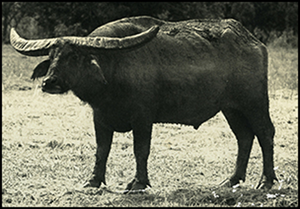Article contents
The re-emergence of nganaparru (water buffalo) into the culture, landscape and rock art of western Arnhem Land
Published online by Cambridge University Press: 18 August 2021
Abstract

The introduction of new animals into hunter-gatherer societies produces a variety of cultural responses. This article explores the role of rock art in western Arnhem Land, Australia, in helping to mediate contact-period changes in Indigenous society in the nineteenth century. The authors explore etic and emic perspectives on the ‘re-emergence’ of water buffalo into Aboriginal cultural life. Merging archaeological analysis, rock art and ethnographic accounts, the article demonstrates how such artworks were used as a tool for maintaining order in times of dramatic social change. The results of this research have significant implications for understanding how cultural groups and individuals worldwide used rock art during periods of upheaval.
- Type
- Research Article
- Information
- Copyright
- Copyright © The Author(s), 2021. Published by Cambridge University Press on behalf of Antiquity Publications Ltd.
References
- 6
- Cited by


